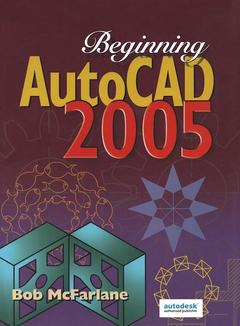Beginning AutoCAD 2005
Auteur : McFarlane Bob

Bob McFarlane MSc BSc
ARCST CEng FIED RCADDes MIMechE MBCS FRSADate de parution : 04-2019
20.3x27.6 cm
Disponible chez l'éditeur (délai d'approvisionnement : 14 jours).
Prix indicatif 208,65 €
Ajouter au panierThèmes de Beginning AutoCAD 2005 :
Mots-clés :
Layers Properties Manager Dialogue Box; A3SHEET Standard Sheet; Line D1; Dimension Style Manager Dialogue Box; Draw Text Single Line Text; Prompt Insert Dialogue Box; Pick Line D3; Respond Endpoint Icon; Command Line Enter; Pick Line; Prompt Select Objects; Menu Bar; Line Command; Object Snap; Modify Toolbar; Dim; Dialogue Box; Object Snap Modes; Drafting Settings Dialogue Box; Sheet Set; Dimension Toolbar; Dimension Style; Menu Bar Selection; Line Icon; Polyline Edit Command



